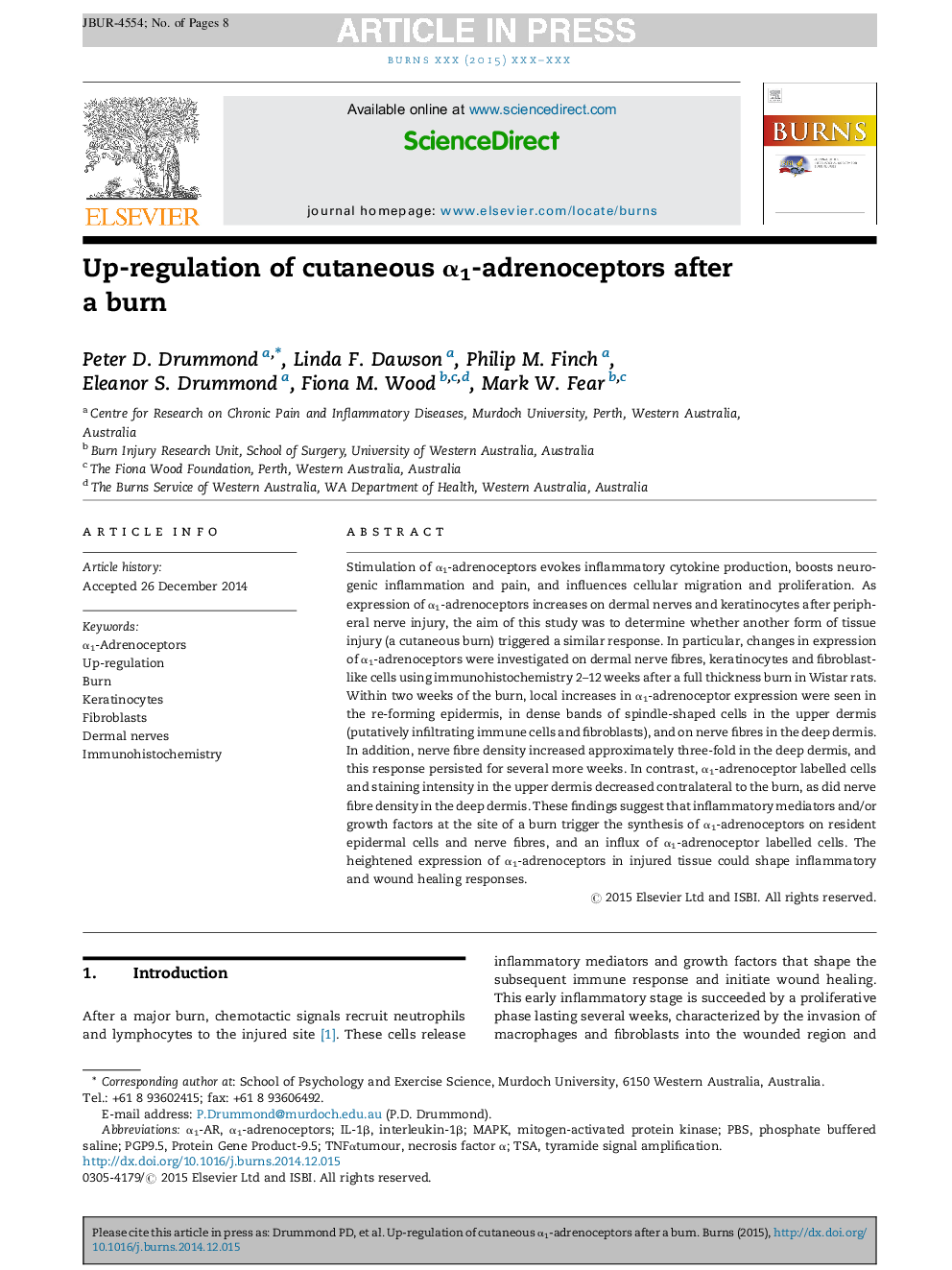| Article ID | Journal | Published Year | Pages | File Type |
|---|---|---|---|---|
| 6048517 | Burns | 2015 | 8 Pages |
Abstract
Stimulation of α1-adrenoceptors evokes inflammatory cytokine production, boosts neurogenic inflammation and pain, and influences cellular migration and proliferation. As expression of α1-adrenoceptors increases on dermal nerves and keratinocytes after peripheral nerve injury, the aim of this study was to determine whether another form of tissue injury (a cutaneous burn) triggered a similar response. In particular, changes in expression of α1-adrenoceptors were investigated on dermal nerve fibres, keratinocytes and fibroblast-like cells using immunohistochemistry 2-12 weeks after a full thickness burn in Wistar rats. Within two weeks of the burn, local increases in α1-adrenoceptor expression were seen in the re-forming epidermis, in dense bands of spindle-shaped cells in the upper dermis (putatively infiltrating immune cells and fibroblasts), and on nerve fibres in the deep dermis. In addition, nerve fibre density increased approximately three-fold in the deep dermis, and this response persisted for several more weeks. In contrast, α1-adrenoceptor labelled cells and staining intensity in the upper dermis decreased contralateral to the burn, as did nerve fibre density in the deep dermis. These findings suggest that inflammatory mediators and/or growth factors at the site of a burn trigger the synthesis of α1-adrenoceptors on resident epidermal cells and nerve fibres, and an influx of α1-adrenoceptor labelled cells. The heightened expression of α1-adrenoceptors in injured tissue could shape inflammatory and wound healing responses.
Keywords
Related Topics
Health Sciences
Medicine and Dentistry
Critical Care and Intensive Care Medicine
Authors
Peter D. Drummond, Linda F. Dawson, Philip M. Finch, Eleanor S. Drummond, Fiona M. Wood, Mark W. Fear,
